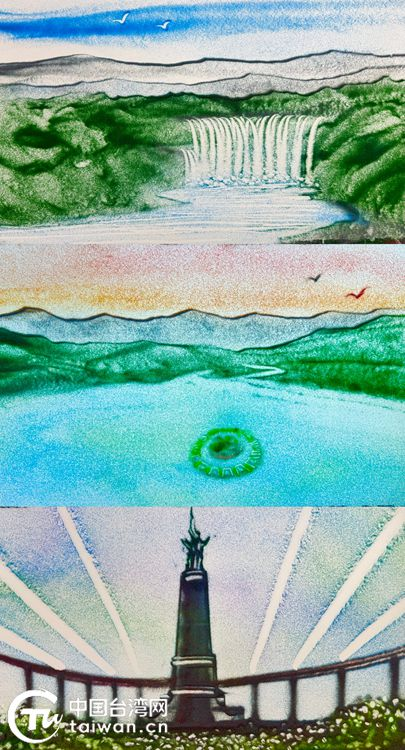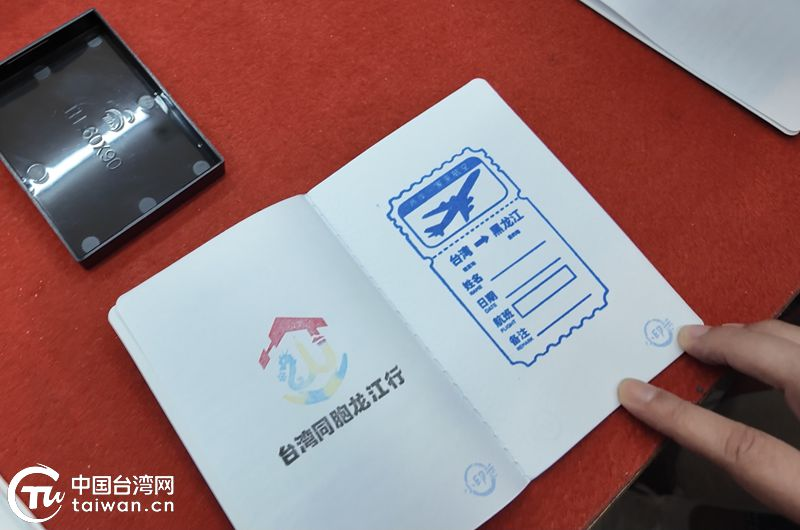Harbin City Adds New Cross-Strait Cultural Landmarks
Source: Taiwan.cnUpdated: 2025-07-31
Harbin, July 31 (Taiwan.cn) — Recently, the “Taiwan compatriots' Heilongjiang Journey” cultural check-in spot officially debuted in Chinese Baroque History and Cultural District, Harbin. The check-in spot was jointly created by the Taiwan compatriots' Heilongjiang Journey Volunteer Service Center, Xue Yiheng Sand Painting Creative Design Center, and Xiao Yin Lane Seal Museum. Through innovative forms such as exclusive commemorative seals and themed sand painting shows, it uses art as a bridge to connect the deep bonds of friendship between compatriots across the Straits.

Sand painting exhibition. (Photo by Taiwan.cn)
As the first deeply integrate sand painting with tourism cultural and creative institution in China, the Xue Yiheng Sand Painting Creative Design Center, which has been rooted in Chinese Baroque for a decade, has become an important window for telling the story of Heilongjiang. It hosts over 150 charity shows of sand painting annually, using flowing sand particles to depict the humanistic charm and natural beauty of the black soil region. The collaboration between the two parties to create this check-in spot further elevates this artistic expression into a platform for cultural exchange across the straits.

Special commemorative seal for Taiwan compatriots' Heilongjiang Journey. (Photo by Taiwan.cn)
The most sought-after commemorative seal for Taiwan compatriots' Heilongjiang Journey has a cleverly designed. The logo centers on the image of “two hands supporting”, which symbolizing the beautiful vision of compatriots across the Straits working together to build a Common Home. The left side of the seal incorporates the initials “HLJ” (Heilongjiang), which is cleverly embedded in the thick texture of black soil, the high spirited momentum of Chinese Loong and the crystal clear and flexible snowflakes, showing the regional characteristics of Heilongjiang; On the right side, the initials “TW” (Taiwan) incorporate the iconic silhouette of Taipei 101 and the layered peaks of Alishan, bringing the elements of the island to life on paper. Ice and snow interplay with mountains and water in the seal, vividly interpreting the harmonious coexistence of cold and warmth, embodying the cultural integration between the two sides of the Strait.

Cross-Strait Sand Painting Show (Photo by Taiwan.cn)
The cross-strait themed sand painting show has become a spotlight of the check-in spot. Amidst the delicate flow of sand particles, the waves of Jingbo Lake and the ripples of Sun Moon Lake ripple together, while the Harbin's Flood Control Monument and the Taipei 101 building gaze at each other across the distance. The sand painting artists used their hands as brushes and the sand as ink to meticulously sketch the iconic landscapes of both Taiwan and Heilongjiang in the play of light and shadow. At the end, the words “A family on both side of the Strait” slowly emerged, allowing the audience present felled the deep affection of the blood connection between the two sides of the Strait in artistic influence.
“We hope to use the ‘seal’ as a medium to make the footprints of Taiwan compatriots in Heilongjiang became a tangible token; and to use ‘sand’ as a bridge to let the shared memories of both sides of the Strait flow through light and shadow.” The person in charge of the Taiwan Compatriots' Heilongjiang Volunteer Service Center stated that the establishment of the check-in spot aims to leave a unique Heilongjiang memory for Taiwan compatriots through immersive interactive experiences. This innovative form of cultural exchange not only injects vitality into the exchange between Heilongjiang and Taiwan, but also deeply penetrates the concept of "A family on both side of the Strait" in artistic experiences, further strengthening the cultural identity of Taiwan compatriots, and allowing the friendship across the Taiwan Strait to flow quietly and be warmly transmitted among the blue bricks and black tiles of Chinese Baroque. (Report by Taiwan.cn and the Taiwan Affairs Office of Heilongjiang Province)
Related Stories